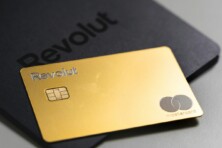Not only do kids have some daily allowance, but also some of them get their own bank accounts

Top 6 most innovative banking and financial products for kids. Source: unsplash.com
Being a kid doesn’t necessarily mean financial exclusion. In fact, even psychologists advise that we let children deal with their own money as early as possible. They say it will help them make wiser financial decisions as grown-ups. Although we can’t comment on that theory, the reality is that many children today have their own budgeting needs.
Therefore, today we’ll take a look at the most exciting financial and banking products created for kids by the most innovative fintech players.
Acorns Early
This investment account for kids comes from the creators of the popular micro-investing app. Early is built into the Acorns investing ecosystem, so when parents pay a monthly fee of $5, they get multiple Early accounts without additional costs. The function works similarly to the Acorns app that rounds up your transactions to the nearest dollar and invests the spare change. The only difference is that you invest in your own children instead of a traditional ETF portfolio. The main account holder may also choose a recurring payment to be paid into an Early account on a daily, weekly, or monthly basis.
Acorns Early is basically a UTMA/UGMA custodial account where funds are stored and protected until the child reaches the legal age of majority. It gives more freedom and flexibility than a traditional college fund. While typical college savings accounts can be used for educational purposes only, UTMA/UGMA ones are designated for everything that benefits the child.
The nice touch of the Acorn app is that you can see an estimated sum your kid will have by a certain age if you continue to invest regularly. Parents can also get potential tax advantages while investing in Acorns Early. Exclusive savings and bigger bonus investments come from the partnering subscription services like Disney+ and ABC Mouse.
FamZoo
FamZoo’s set of products includes prepaid cards for minors and a family budgeting app. Within the app, each family member gets a separate account. Instant alerts notify parents and children alike about card activity and the remaining balance in real-time. Yet, only parents are allowed to control the actual money flow and set the rules for recurring payments. Parents can also temporarily lock the card for protection, or for a “financial time-out”. Children can send money requests via text messages when they need extra cash, or their allowance is delayed.
An interesting feature of this app is the payment checklists. At some age, kids can be taught to earn additional money instead of simply getting a regular allowance amount. So, parents may schedule chores and odd jobs tied to rewards or penalties. In this demo mode, the child learns how real money is made.
To teach even more responsibility, joint bills can be split among all family members. You can even schedule automated debits to charge kids for their share of recurring family expenses like the Internet, video streaming services, groceries, etc. Instead of simply giving your teenagers money, you can give them a loan. Track the repayment with a parent-defined loan interest rate.
Kids can also give savings a try, with a basic envelope budgeting. Minor account holders can put aside some money into multiple purpose-driven savings accounts. Interests are defined and paid out by parents. To increase their financial literacy, children may set savings goals, make savings projections, and track progress. Kids can donate selected amounts to charitable trusts within the app as well.
FamZoo prepaid cards are a MasterCard reloadable card offering designed specifically for families. Linked together and accessed online through FamZoo’s Virtual Family Bank software, the cards are used collaboratively to share funds between family members and develop financial responsibility. Each family member can have either one or a few prepaid cards. You can order multiple cards per family member with each dedicated to a specific purpose — like clothing, lunch money, toys, charity, saving for a vacation or a party, building an emergency fund, etc.
Once you load up your primary funding card, you can distribute money between your family members instantly and frequently with no fees. There are lots of recharge options — many of which are free: direct deposit, bank transfer, MasterCard rePower, Reload At the Register, and a variety of popular payment services like PayPal and PopMoney.

Source: unsplash.com
Revolut Junior
The recently updated product for minors aged 7-17 from the British challenger bank is a sub-account of your Revolut personal account that you allow a minor to use. There’s also a Revolut card linked to the Junior account so that your kids can cash out their allowance. The Revolut Junior card can be used to make purchases online or in-person and to make ATM withdrawals. All these features can be turned on and off from the Revolut app. Moreover, the cards can’t be used to make a purchase at some merchant types (based on MCC code). Thus, transactions at merchants who only sell alcohol, cigarettes, and gambling products will be automatically blocked. Revolut Junior is still in the roll-out stage. Hence, it’s only available to Premium and Metal customers in the U.K. for now. The company will eventually expand the offer to more users and more countries.
Kard
A French neobank Kard has created its products exclusively for Generation Z. Kard’s personalized app aims to empower teens to make independent financial decisions. This is facilitated by their own bank account, their own IBAN, and their own Mastercard debit card. The social network-like features will bring fun to the spending process. Kard owners can share the transactions they want with their friends. They will be able to like them and comment on them. The traditional transaction messages can be modified: teens can add photos of an object or change the title. This concept is already popular on Snapchat so Kard users will surely enjoy it as well.
Unlike traditional accounts for kids, all parents can do here is top up their kid’s account. They don’t have full control over it which presumes a strong level of trust. Nevertheless, parents can still lock/unlock the card if needed. Besides, certain categories of purchases are blocked on default (online betting, 18+ websites, etc.).
Both parents and children should install the app that is secured by code, fingerprint, or facial recognition. The security of the money you deposit on Kard is guaranteed up to €100,000 by the Deposit Guarantee and Resolution Fund (FGDR). Creating an account, making purchases and withdrawals is zero-fee even abroad. The card also supports a contactless payments feature for transactions up to €50. Another important benefit of the Kard is the smartphone insurance included in the package. In case you break your phone screen, the neobank will reimburse you up to €100.
Teens will also enjoy P2P transfers and immediate money requests. They can share their secure payment Slash link from the app and get money from anyone in 30 seconds.
The French challenger plans to add a range of new features in the nearest future including cash deposit, saving goals, Apple Pay, and Google Pay connectivity.
Monobank Kids Card
A kids’ product from the Ukrainian digital-only bank has several advantages. Not only is it free to use and controlled by parents, but also children, as well as adults, have access to the 10% annual interest on the remaining balance (deposited every month), cashback on selected categories, in-app rewards, and contactless payments GPay or Apple Wallet.
With the “Parental Control” you can disable:
- Transactions with quasi-cash, that is, those associated with various betting organizations, high-risk businesses, casinos, etc.
- Account replenishment by other persons (excluding you).
- ATM withdrawals.
- Parents also have the option to control their child’s online purchasing limit, unless they want it to remain at the discretion of the cardholder.
Bankaroo
Even if you aren’t ready to trust a kid with their own spending choices, that’s not a reason to keep your child in the dark about money management. Bankaroo is a virtual bank for kids, where you can teach them about the value of money in a safe environment. Kids will learn how to budget, save up for their dreams and goals, and spend responsibly using the Bankaroo app and website. They will also earn badges by engaging with the app and performing tasks such as creating and completing financial goals.
This app can be used in a school environment too. Bankaroo for Schools includes an online portal for teachers and a mobile app for students.
Bankaroo PLUS (formerly, Bankaroo gold) is an enhanced edition where kids can manage separate accounts for checking, savings, and charity. As well as transfer funds between family members.
The peculiarity of this app is that it was actually created by a minor. Danielle Gafni from the US implemented her banking app idea at the age of 11, with some help from her parents, of course. Therefore, it’s very simple to navigate and understand. All you need to have is basic reading skills. Most of the users are 5-14 years old.
Although the virtual bank does not hold or manage real funds, Bankaroo runs on a secured server, and all the data is encrypted. All communications are on HTTPS protocol and parents have full control over who has access to their account.
SEE ALSO:









